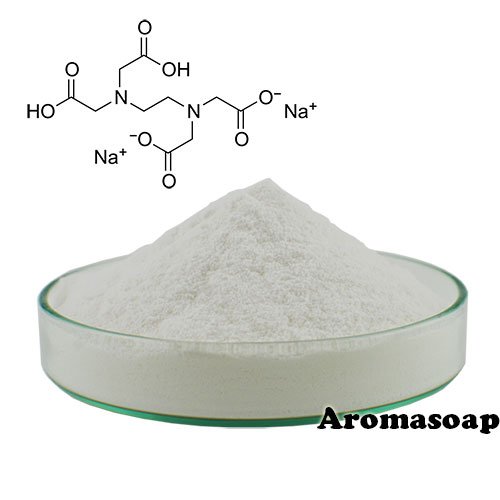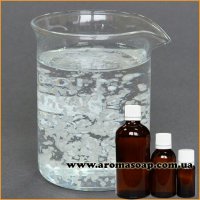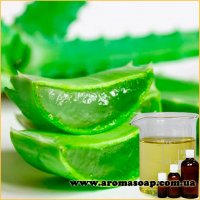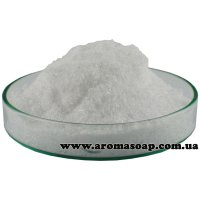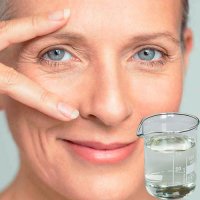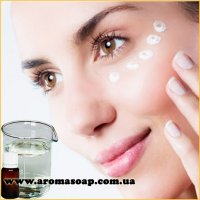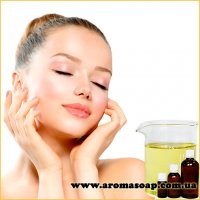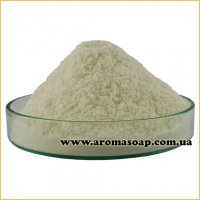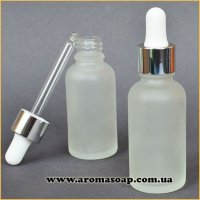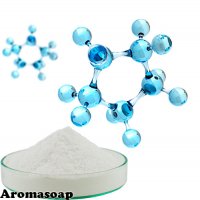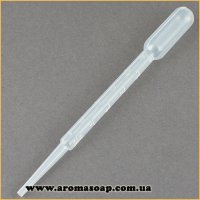Trilon B (EDTA)
Trilon B is a complexing agent (complexon - creates complex compounds with many elements), a preservative and emulsion stabilizer.
- Appearance: powder (granules or crystals), white, odorless. Country of origin: China pH level: 4.5 (1% solution), 4-5.5 (5% solution) Solubility: water, especially good in warm, hot, alkali. Slightly soluble in alcohol. Other names: 2-water disodium salt of ethylenediaminetetraacetic acid, Disodium edta, Na2-EDTA, 2Na-EDTA, 2Na-EDTA, disodium salt, complexone-III. Chemical formula: C10H14O8N2Na2•2H2O
Trilona B is the disodium salt of ethylenediaminetetraacetic acid. BASF named the component simply “trilon b”. The trade “name” took root and became firmly attached to the product.
The long and complex name of ethylenediaminetetraacetic acid is abbreviated to “edta”. EDTA is a 4-basic carboxylic acid. Actively used in the cosmetics industry.
- * E385 - food additive (calcium-sodium salt EDTA). Preservative, stabilizer in soft drinks that contain ascorbic acid and sodium benzoate; Antioxidant and stabilizer in mayonnaise, margarine; Preservative in the production of canned products (fish, vegetables, legumes, mushrooms, seafood);
Let’s take a closer look at what “trilon b” is. It is also called “sodium edta” (EDTA-Na2, EDTA-Na2).
Trilona B replaces insoluble ions of metal salts with sodium ions. They are soluble in aqueous media. This possibility has influenced the use of Trilon in a variety of fields.
Disodium edta is used:
- for cleaning and flushing pipes, boilers in heating networks and boiler rooms from iron oxide deposits; to clean the radiator in a car (the cooling system is washed with Trilon B solution, which destroys scale); for coating metal products with copper and for processing copper products; for developing photographs and bleaching colored photographic papers (Trilon B in hard water prevents the formation of lime deposits, and is also added to the bleaching solution); for removing corrosion in restoration work; to combat the effects of heavy metal poisoning; for creating detergents and bleaching agents; for rubber production, etc.
Interesting Facts. Trilon B is used in winemaking. How are they compatible? Very simple. It stabilizes those wines in which the amount of iron, copper, zinc and aluminum is exceeded. Trilon B brings such metals into a stable form. This means that the wine will not become cloudy.
Cosmetic use of Trilon B
A cosmetic product may deteriorate if it contains components sensitive to metal ions. Such assets together create compounds that do not dissolve. Trilon B builds stable complexes and prevents this from happening.
Even minimal introduction of Trilon B into cosmetic products improves their properties.
It can withstand high temperatures (up to 100? C). Soap makers need not be afraid of the temperature of the lye solution.
Cosmetic properties of Trilon B
- Increased shelf life
As a co-preservative, Trilon B protects the product from rancidity, loss of color, and premature deterioration of components. Cosmetics last longer and are used longer.
- Preserving transparency
A real find for cleansing gels and foams. Trilon B is most often used in a washable “ruler”. It maintains the transparency of the products, prevents possible sedimentation and separation of the product.
- Improved foaming
The conditioning properties of soap with Trilon B will be significantly improved, and hardness ions affect foaming much less. Additionally, the soap will retain its color and shelf life. This applies to all surfactants.
- Water softening
Works especially well in hair products. Trilon B protects hair from the harmful effects of hard tap water.
Cosmetic use of Trilon B:
- shower gel shaving products foam for washing hair shampoo soap
Input percentage: 0.1—0.2%
- 0.01-0.2% increase in the work of preservatives in creams, lotions; 0.1% softening of hard water, increasing shelf life in shampoos; 0.2-0.5% against rancidity, loss of color; 1.2-4% of unwanted rancidity, for foam stability in soap.
Add to the aqueous phase and stir until dissolved.
When the task arises of buying Trilon B, you may encounter difficulties. There are several “types” of trilon on the Internet, which is confusing:
1. Trilon B (tetrasodium salt, tetrasodium EDTA, EDTA-Na4)
C10H12N2O8Na4 * 4H2O
pH (1%) – 11.
2. Trilon BD (disodium salt EDTA, EDTA-H2Na2)
C10H18N2Na2O10 * 2H2O
pH (5%) – 4-5.
3. Trilon BS (ethylenediaminetetraacetic acid, EDTA-H4).
C10H16O8N2
pH - 2.5.
Chemical terminology has become mixed with product "trade" names. This confusion is associated with the already well-known company BASF (see below). What was “chemically” called “Trilon B” was actually renamed “Trilon BD”.
On soap-making forums, entire topics are devoted to the difference and understanding of “trilon”.
In soap-making and home cosmetics stores, they mainly sell Trilon “b” with a pH level of 4-5. This trilon is also sold under the name “Trilona B” and “Trilona BD”. At the same time, in all certificates for the product its name will be indicated as “Trilon B”.
In order not to get confused and buy the desired trilon, ask the seller for a certificate. It will tell you the chemical name (often with the formula) of the product and give you an easy way to determine the pH level.
Trilon with pH 11 is very rarely found in cosmetic ingredient stores. Some Internet resources recommend this type of trilon to soap makers. The positive effect on the properties of regular Trilon B soap with a pH of 4-5 has been experimentally proven.
Storage: in a dry, cool place. Exclude materials from copper (its alloys), zinc, nickel, aluminum.
Special instructions: do not inhale. May cause irritation to the skin, respiratory tract and mucous membranes. Always use gloves, a respirator and goggles when working with disodium salt.

